Headlines and events archive
Displaying 651 - 700 of 1944
You may also find an archive of news published in the media which are related with the Instituto de Astrofísica de Andalucía - CSIC.
Pages

|
18/06/2018 - 12:30
Large-IFS for CAHA & LUCA: Local Universe from Calar Alto LoI for new instruments for 3.5m Telescope F. Prada, E. Perez-Jimenez, R. Gonzalez Delgado, R. Garcia Benito |
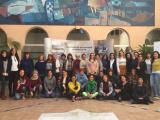
|
07/02/2019
International Day of Women and Girls in Science The Institute of Astrophysics of Andalusia joins the celebration of the International Day of Women and Girls in Science, which seeks to make visible the scientific work of women and promote vocations in girls |

|
19/02/2019 - 12:00
Instrument development at the AAO The AAO is a consortium of three Australian instrumentation groups, based at Macquarie University, University of Sydney, and the Australian National University. Collectively, the consortium has delivered hundreds of instrument projects for astronomy, for our own telescopes and internationally. We have particular expertise in fibre positioners and fibre systems, spectrographs, astro-photonics, and adaptive optics. I will give an... Jon Lawrence |

|
09/05/2019 - 12:30
Nonlinear dynamics of space and astrophysical plasmas Solar atmosphere and solar wind provide a unique laboratory for understanding the nonlinear dynamics of space and astrophysical plasmas. A quantitative analysis of the reconnection condition and the degree of intermittency reveals that rope–rope magnetic reconnection is the most likely site for genesis of interplanetary intermittency turbulence in this event. The dynamic pressure pulse resulting from this reconnection triggers the onset of a... Prof. Abraham Chian |

|
28/03/2019 - 12:30
CTA: the Cherenkov Telescope Observatory for VHE Gamma Ray astronomy The Cherenkov Telescope Array (CTA), currently in construction, shall be the Cherenkov Telescope Observatory for VHE Gamma Ray Astronomy, and shall provide crucial data for the understanding of the extreme universe in the recently open multimessenger era. The goals and characteristics of the project will be reviewed, and the current status and plans presented. In addition, the crucial role of the Spanish community in this project will be... Manel Martinez |

|
16/05/2019 - 12:30
Active Galactic Nuclei and their large-scale structure: an eROSITA mock catalogue I will present in this talk a methodology to construct mock catalogs for X-ray selected AGN samples based on dark matter only N-body simulations. With this method, we predict observed AGN magnitudes in the UV, optical and NIR bands, by adopting a set of empirical spectral energy distributions. Dr. Johan Comparat |

|
25/04/2019 - 12:30
Cosmic Dust in Planetary Atmospheres In this seminar I will describe the results of a large study designed to determine the input rate of cosmic dust to the terrestrial atmosphere, using a self-consistent treatment of cosmic dust from the outer solar system to the Earth’s surface. John Plane |
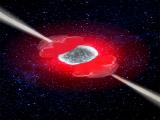
|
13/03/2019 - 12:30
Signatures of a jet cocoon in early spectra of a supernova associated with a gamma-ray burst Thanks to a detailed observational monitoring and an accurate spectral synthesis analysis of the early phases of SN 2017iuk, we conclude that these features originate from the mildly relativistic hot cocoon that is generated by the GRB ultra-relativistic jet, while it is expanding and decelerating into the medium surrounding the progenitor star. Dr. Luca Izzo |
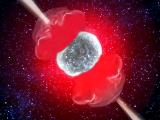
|
16/01/2019
Observations of a rare hypernova complete the picture of the death of the most massive stars A work, lead by the Institute of Astrophysics of Andalusia (IAA-CSIC) and published in Nature, studies in detail the death of a massive star that produced a gamma-ray burst (GRB) and a hypernova |

|
10/01/2019 - 12:30
The road to the Square Kilometre Array New and existing facilities operating at submm-to-m wavelengths are shedding new light on the formation of planets, black holes, and even the first galaxies. These telescopes provide the test bed for the technological advancements required to build the next generation of large radio telescopes, like the Square Kilometre Array (SKA). Dr. Jeff Wagg |

|
07/03/2019 - 12:30
High-velocity Molecular Clouds near the Galactic Center The central region of our Galaxy contains a huge amount of molecular gas. This region is often referred to as the "central molecular zone (CMZ)". The recent ALMA observations toward this HVCC revealed orbital motions around an invisible massive object, which is probably an intermediate-mass black hole. Yuhei Iwata |
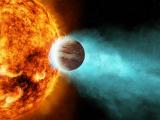
|
06/12/2018
The "planet-hunter" CARMENES studies evaporating atmospheres and water vapor beyond the Solar System Three studies with the infrared channel of the CARMENES instrument, developed at the Institute of Astrophysics of Andalusia (IAA-CSIC), are published in the journals "Science" and "Astronomy & Astrophysics". CARMENES opens a door to the study from the ground of the composition of exoplanetary atmospheres, their escape processes and their clouds and aerosols |
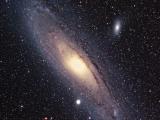
|
27/11/2018
A new instrument for studying galaxies in the local universe from Calar Alto LUCA is proposed as a new generation instrument for the 3.5 meter telescope of the Calar Alto Observatory (Almería, CAHA). The project, conceived in the Institute of Astrophysics of Andalusia (IAA-CSIC), has been selected by the advisory committee of the observatory for the funding of the feasibility study, which is managed by the University of Almeria (UAL) |

|
13/02/2019 - 12:30
THOT: Dating stars Life, planets, exoplanetary systems, stars, and our galaxy evolve with time, and the best and sometimes only way for understanding this evolution is dating stars. THOT is a Marie Curie Project devoted to gathering and updating all the stellar dating techniques into a single computational tool. In this presentation, I will present some of the most promising techniques for stellar dating, and show the current main contributions of this project (... Dr. Andres Moya |

|
20/11/2018
ESCAPE: Open Science and new paths in the knowledge of the cosmos at all scales ESCAPE project encompasses some of the world's largest scientific infrastructures in astronomy and particle physics, for the development of a single digital platform for the open use of data. Funded with sixteen million euros by the European Union through the Horizon 2020 program, it represents a unique effort towards Open Science. The Institute of Astrophysics of Andalusia (IAA-CSIC) participates in the project, for its key role in the... |
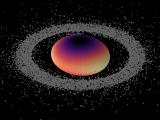
|
19/11/2018
The complex dynamics of the miniature ring systems of the Solar System The finding of rings around Solar System bodies that are not planets, such as the dwarf planet Haumea or the centaur Chariklo, showed that these are more common structures than previously thought. A work, in which the Institute of Astrophysics of Andalusia (IAA-CSIC) participates, analyzes the complex dynamics of these miniature rings |
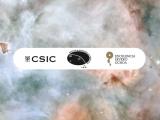
|
16/11/2018
The Institute of Astrophysics of Andalusia (IAA-CSIC) obtains the distinction Center of Excellence Severo Ochoa The objective of the program is to finance and accredit research centers that demonstrate international impact and leadership |
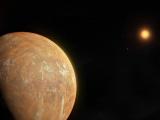
|
14/11/2018
Super-Earth discovered around the second nearest stellar system An international team of researchers, with the participation of the Institute of Astrophysics of Andalusia (IAA-CSIC) finds an exoplanet with three times the mass of the Earth. The exoplanet orbits the red dwarf Barnard, the closest star to the Sun after the Alpha Centauri system. The team has used observations taken in 18 years combined with the CARMENES planet-hunter spectrograph at Calar Alto Observatory (CAHA) |

|
15/11/2018 - 12:30
The habitability of stagnant-lid Earths around dwarf stars We show that Earth-like stagnant-lid planets allow for habitable surface conditions within a continuous habitable zone that is dependent on interior composition. Dra. Mareike Godolt |

|
31/10/2018
The researcher Mirjana Povic receives the Nature Research for Inspiring Science Award Researcher at the Ethiopian Space Sciences and Technology Institute (ESSTI) and associated doctor at the Institute of Astrophysics of Andalusia, she investigates the formation and evolution of galaxies. She works in the development of science and education in Africa, with special attention to the role of women, and has coordinated and participated in projects in Ethiopia, Uganda, Rwanda, Tanzania, South Africa, Kenya and Ghana |

|
08/11/2018 - 12:30
What we (don't) know about the trans-Neptunian objects The first trans-Neptunian object was discovered in 1930 and we waited over 60 years to discover the second one. The discovery of Albion (a.k.a. 1992QB1) enticed the minor bodies community to characterize the new population, called collectively as trans-Neptunian objects (TNOs). Today we know the existence of over 2,000 objects and counting. Nevertheless, it seems that we have reached our technological limitation in terms of observational studies... Dr. Alvaro Alvarez-Candal |
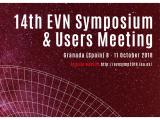
|
07/10/2018
Researchers from around the world debate in Granada the latest advances in the observation of the universe in radio The European VLBI Network (EVN), a network of radio telescopes distributed throughout Europe and Asia, with additional antennas in South Africa and Puerto Rico, holds its fourteenth symposium in Granada. Over one hundred and thirty researchers and technologists from around the world will discuss the latest scientific results and technological developments in the field of radio observation |
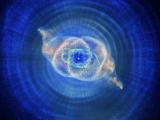
|
29/11/2018 - 12:30
Spirals, rings and arcs around evolved stars We searched the complete archive of the HST and Spitzer to characterise rings and arcs around evolved low-mass stars (AGB stars, proto-PNe and PNe), study their physical properties and address their formation mechanisms. In this talk, we present the observational results of our survey, the predictions of simple radiation-hydrodynamic simulations as well as the future of the project. Dr. Jesús Toala |

|
22/11/2018 - 12:30
Time variable processes of Sagittarius A*, the massive black hole at the centre of the Milky Way Date: 22/11/2018 . 12:30 hrs Speaker: Dr. Gunther Witzel Affiliation: Max-Planck-Institute for Radioastronomy, Bonn, Germany. Dr. Gunther Witzel |

|
07/02/2019 - 12:30
Mars UV atmospheric emissions In this talk we will summarize our recent analysis of observations performed by the instrument SPICAM on the Mars Express mission on the dayside of the planet, and by the instrument IUVS on board MAVEN on the nightside of the planet. Dr. Francisco González Galindo |
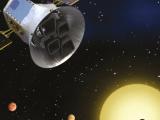
|
20/09/2018
CARMENES instrument gets the first exoplanet detection alerts from TESS (MIT-NASA) mission It is expected that the TESS mission, developed at the Massachusetts Institute of Technology (MIT) and NASA, finds about one thousand five hundred planets around other stars in its two years of operation. CARMENES spectrograph team, located at the Calar Alto Observatory, has begun to receive the alerts in order to confirm and analyze TESS detections |

|
13/12/2018 - 12:30
RESULTS FROM THE RADIOASTRON AGN POLARIZATION KSP: A LIMB-BRIGHTENED JET IN 3C273 The RadioAstron active galactic nuclei (AGN) polarization Key Science Project (KSP) aims at exploiting the unprecedented angular resolution provided by RadioAstron to study jet launching/collimation and magnetic-field configuration in AGN jets. The targets of our KSP are some of the most powerful blazars in the sky. I will present observations at 1.4 GHz and 22 GHz of 3C273, performed in 2014, designed to reach a maximum baseline of... Gabriele Bruni |

|
12/04/2019 - 12:30
Imaging a black hole with the Event Horizon Telescope We have imaged the shadow of the central black hole in the radiogalaxy M87. This required assembling the Event Horizon Telescope, a global VLBI array observing at a wavelength of 1.3 mm capable of achieving an angular resolution of 20 microarcsecond (uas). We have resolved the central region of M87 into an asymmetric bright emission ring with a diameter of 42+-3 uas, which is circular and encompass a central depression in brightness with a flux... Dr. Jose Luis Gómez |
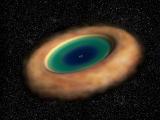
|
17/01/2019 - 12:30
AGN TORUS DETECTABILITY AT SUB-MILLIMETER WAVELENGTHS: WHAT TO EXPECT FROM ALMA CONTINUUM DATA In this talk I will show you a study on the detectability of the emission associated with the AGN dusty structure at sub-mm wavelengths using ALMA, in a theoretical and observational way. Dr. Alice Pasetto |
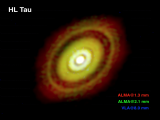
|
24/01/2019 - 12:30
Observing Planet Formation with the VLA in the era of ALMA In only four years, ALMA has radically changed the field of planet formation. We are currently obtaining very detailed images of the dust emission in protoplanetary disks with an unprecedent sensitivity and high angular resolution. Dr. Carlos Carrasco |

|
21/02/2019 - 12:30
Planck Cosmological Legacy: the next CMB polarization experiments The results and products derived from the third and final release of data from the Planck mission will be reviewed with emphasis on the implications for cosmology. Prof. Enrique Martinez |

|
27/09/2018 - 12:30
ASKAP and HI in Galaxies I will divide my talk into three parts, starting with an overview of CSIRO’s Australia Telescope National Facility (ATNF), especially our telescopes (ASKAP... Baerbel Koribalski |

|
06/08/2018
The strange case of HuBi1, an inside-out stellar corpse The physical structure of a planetary nebula resulting from the final evolution of a solar-like star is contrary to that of all other similar sources. A research led by IAA-CSIC concludes it resulted from a born-again event of its central star |
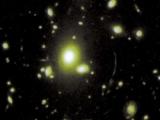
|
10/07/2018
An extraordinarily dense region tests the theory of structure formation in the universe A halo of dark matter six times denser than expected has been found around a cluster of galaxies. This finding shows that there must be very effective mechanisms, not considered until now, for the accumulation of matter around the great structures that populate the universe |
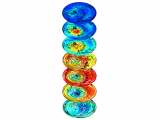
|
18/10/2018 - 12:30
An unusual autumn Elevated Stratopause Event (ESE) IAA Seminar Date: 18/10/2018 . 12:30 hrs Speaker: Dr. Maya Garcia Comas Dr. Maya García Comás |

|
11/10/2018 - 12:30
The planetary nebula HuBi 1, a rebel with a cause Planetary nebulae, the descendants of low- and intermediate-mass stars, have characteristic onion-like ionization structure, with the highest ionization species closer to the central star. This is true for all planetary nebulae, but HuBi 1, which shows an inverted ionization inner shell. There is a reason for this oddity, a peculiar stellar evolution of its central star, which makes HuBi 1 the missing link of the population of cool C-rich... Dr. Martin Guerrero |
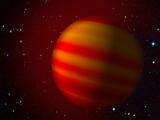
|
03/07/2018
The atmosphere of Kelt-9b, the hottest known planet, is being dragged towards its star Similar to Jupiter, Kelt-9 is hotter than some stars. Thanks to the CARMENES instrument at Calar Alto Observatory, astronomers detected an extensive hydrogen envelope around Kelt-9b that escapes and is being captured by the star |

|
06/09/2018 - 12:30
Optical spectroscopy of local type-1 AGN LINERs The Balmer emission originated in the broad line region (BLR) of active galactic nuclei (AGNs) could be either weak and difficult to detect, or even absent, for low luminosity AGNs, as low ionization nuclear emission-line regions (LINERs). This makes LINERs challenging to fit in the AGN unification scheme. Moreover, a long debate can be found in the literature proposing different ionization sources at the origin of optical emission lines and no... Dr. Sara Cazzoli |
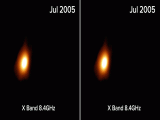
|
25/10/2018 - 12:30
The Arp299B-AT1 puzzle: First resolved imaging of a tidal disruption event Date: 25/10/2018 . 12:30 hrs Speaker: Dr. Miguel Angel Pérez-Torres Affiliation: IAA-CSIC, Spain Dr. Miguel Angel Pérez-Torres |
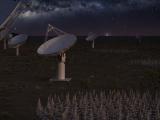
|
19/06/2018
Spain joins the SKA Organisation SKA is a worldwide scientific and technological project to build the largest radio telescope in the world. The Spanish participation has been led by the Institute of Astrophysics of Andalusia (IAA-CSIC) |
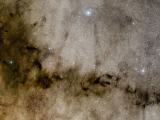
|
19/06/2018
The star distribution in clusters is established long before stars begin to shine The analysis of the Pipa nebula, a region of very early star formation, has confirmed that the density of the pre-stellar nuclei determines the geometry of the clusters |
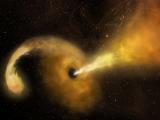
|
14/06/2018
Astronomers See Distant Eruption as Black Hole Destroys Star First observation of the formation and expansion of a jet of material expelled by a supermassive black hole after destroying a star. The work, led by the University of Turku and the Institute of Astrophysics of Andalusia (IAA-CSIC), is published in the journal Science |
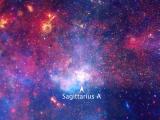
|
07/06/2018
The strange objects at the center of our galaxy: clouds of gas that behave like stars They could be stars blowted by the extreme gravity conditions around Sagittarius A *, the supermassive black hole at the galactic center. The results obtained on three of these objects after eleven years of observations with the Keck telescope (Hawaii) have been presented at the meeting of the American Astronomical Society (AAS) |
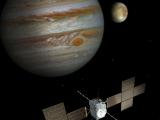
|
29/05/2018
The IAA, the only Spanish institution involved in JUICE (ESA), finishes the engineering phase of its contribution to the mission JUICE, a mission of the European Space Agency (ESA) that will be launched in 2022, will study Jupiter and its moons to analyze the possibilities of the development of life around the gas giant planets. The Institute of Astrophysics of Andalusia (IAA-CSIC) participates in two of the instruments of the mission, the GALA laser altimeter and the JANUS camera |

|
28/06/2018 - 12:30
Extreme quasars at high redshift The study of the AGN accreting close to the Eddington limit (L/LEdd~1) has taken an important role, due to their potential use as standard candles for cosmological applications. With the purpose to understand the physics of extreme quasar, we perform a spectroscopic analysis of a sample of highly accreting quasars at high redshift (z~2–3). Our sample were observed with the OSIRIS spectrograph on the GTC 10.4 m telescope located at the... Dr. Maryloli Martinez Aldama |

|
13/09/2018 - 12:30
The peculiar case of the active galactic nuclei in PBC J2333.9-2343 Under unification schemes, active galactic nuclei (AGN) can be explained by orientation effects. However, some sources show properties at different frequencies that led to incongruent classifications and cannot be explained by such unification scheme. This is the case of PBC J2333.9-2343; its optical spectrum is of a type 2 AGN but its X-ray spectrum does not show signs of absorption, and in the radio it has many features typical of a blazar but... Dr. Lorena Hernández-García |
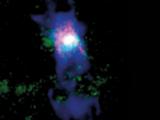
|
15/05/2018
Gigantic gas outflow generated by numerous supernova explosions detected in Arp 299-A galaxy Arp 299-A galaxy, which is in the process of merging with another galaxy (Arp299-B), is notable for its intense starbursts and its high rate of supernova production. New observations in radio have allowed to detect a filamentary structure that emanates from the nucleus, which is interpreted as a flow of gas at high speed |

|
20/09/2018 - 12:30
Slender CaiiH fibrils observed by SUNRISE II The special observing conditions of the SUNRISE observatory allow obtaining observations in the UV with unprecedented temporal stability and spatial resolution. On its second scientific flight, the Sunrise Filter Imager (SUFI) was used to record a time series of narrow-band intensity images in the CaiiH line for approximately one hour at a cadence of 7 seconds. This unique dataset enabled us to characterize the morphological properties of 598... Dr. Ricardo Gafeira |
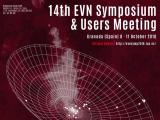
|
08/10/2018 - 11/10/2018
14th EVN Symposium & Users Meeting Granada |
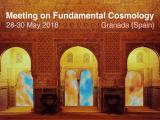
|
28/05/2018 - 30/05/2018
https://cafpe.ugr.es/fcosmology18/ Granada |